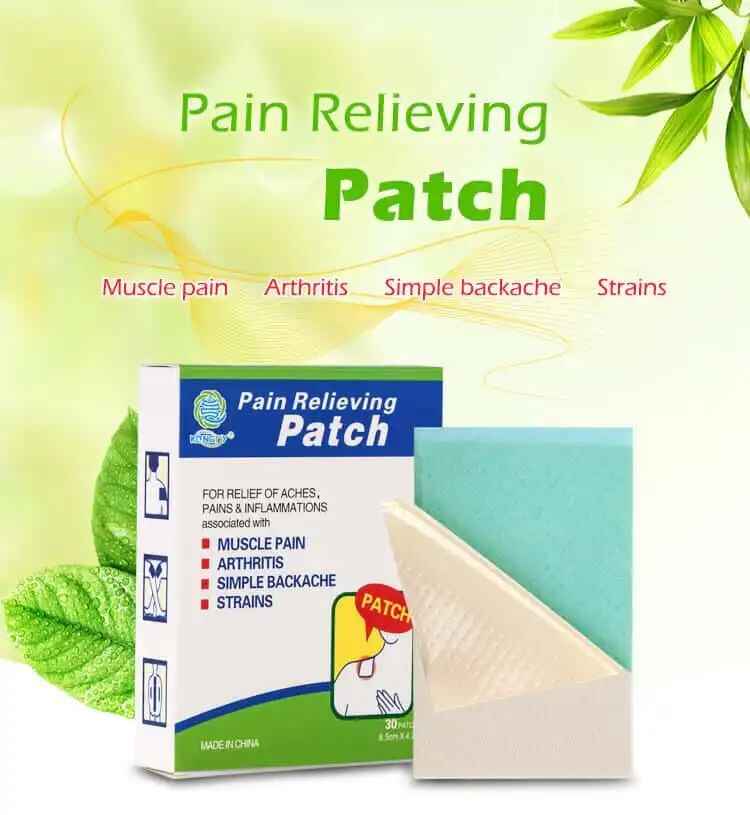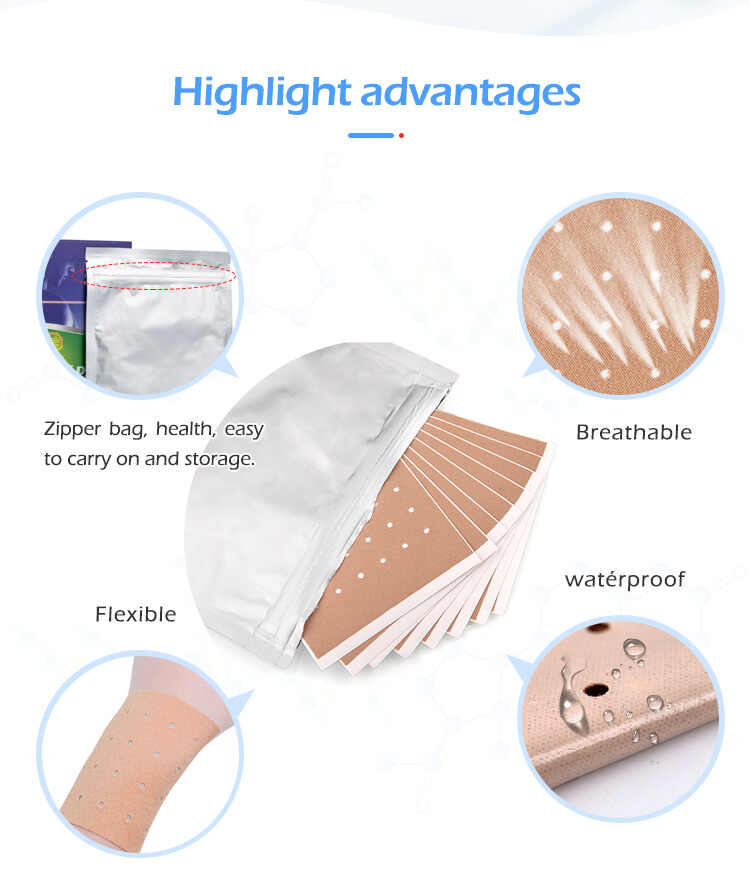What Is the Difference Between OEM and Private Label in Pain Relief Gel Patches?
Understanding the Key Distinctions to Help You Choose the Right Manufacturing Strategy for Your Brand

Introduction
In the ever-expanding market for topical pain relief products, Pain Relief Gel Patches OEM and Private Label Pain Relief Gel Patches offer businesses two powerful options for launching or expanding their product lines. Whether you’re a wellness brand, pharmacy chain, or e-commerce startup, understanding the difference between these two manufacturing models is crucial to ensuring market fit, scalability, and profitability.
This in-depth guide will explore the core differences between OEM and private label strategies in the pain relief gel patch industry, helping you make the right choice for your business. We will also cover the implications of working with a Pain Relief Gel Patches Manufacturer or Pain Relief Gel Patches Supplier, and how Custom Pain Relief Gel Patches can be tailored to your brand’s unique vision.
1. Definitions: OEM vs. Private Label in the Pain Relief Gel Patch Industry
What is OEM (Original Equipment Manufacturer)?
In the context of Pain Relief Gel Patches OEM, OEM refers to a manufacturing model where the Pain Relief Gel Patches Manufacturer produces a product based on the specifications and formulations provided by the buyer (you). You maintain full control over product formulation, active ingredients, patch size, adhesive strength, and even the backing material.
Key Characteristics of OEM Pain Relief Gel Patches:
Buyer defines product formulation and design.
Manufacturer handles production and often packaging.
Ideal for businesses with R&D capabilities or specific performance goals.
Typically results in Custom Pain Relief Gel Patches.
Higher upfront investment but stronger brand differentiation.
What is Private Label?
With Private Label Pain Relief Gel Patches, the manufacturer already has a ready-made formula and design. You simply brand it as your own. This approach is faster and more affordable, ideal for companies that want a quick market entry with minimal development costs.
Key Characteristics of Private Label Pain Relief Gel Patches:
Manufacturer supplies pre-formulated gel patches.
Buyer applies branding and packaging.
Lower R&D costs and quicker turnaround time.
Less customization.
Suitable for startups or companies testing the market.
2. Comparing OEM and Private Label Pain Relief Gel Patches: A Breakdown
| Feature | OEM Pain Relief Gel Patches | Private Label Pain Relief Gel Patches |
|---|---|---|
| Customization | Full — Custom Pain Relief Gel Patches tailored to your formula, materials, size, and features | Limited — Branding and packaging only |
| Time to Market | Longer — due to R&D, sample testing, and custom manufacturing | Shorter — ready-to-brand products |
| Upfront Investment | Higher — involves product development, testing, and compliance | Lower — cost-effective entry strategy |
| Brand Differentiation | High — your product is unique and harder to replicate | Medium — may share formulation with competitors |
| Regulatory Control | Greater — you can control ingredient claims and certification processes | Moderate — relies on manufacturer’s certifications |
| Target Business | Established brands, R&D firms, custom product developers | E-commerce, pharmacies, health retailers seeking speed |
3. OEM Manufacturing Process for Pain Relief Gel Patches
When working with a Pain Relief Gel Patches OEM partner, the process typically involves:
Product Consultation – Discuss your formulation goals and market needs.
Formulation Development – Collaborate with R&D teams to create the perfect pain relief blend.
Sample Production & Testing – Ensure safety, efficacy, and comfort.
Packaging Design – Tailored branding and compliance labeling.
Mass Production – Scalable output handled by a specialized Pain Relief Gel Patches Manufacturer.
Quality Assurance – Verification via GMP, ISO, or FDA certifications depending on market regulations.
4. Private Label Manufacturing Process
If you choose Private Label Pain Relief Gel Patches, the steps are streamlined:
Select Product from Catalog – Choose from pre-existing formulations.
Customize Branding – Apply your logo, product name, and packaging design.
Compliance Check – Ensure it meets your local regulatory requirements.
Production & Fulfillment – Ready for market within weeks.
This process is often facilitated by experienced Pain Relief Gel Patches Suppliers who maintain inventory for fast turnaround.
5. Pros and Cons Summary
OEM Pros:
Full product control
Brand exclusivity
Greater flexibility for innovation
OEM Cons:
Longer lead times
Higher development costs
Private Label Pros:
Quick market entry
Budget-friendly
Simple process
Private Label Cons:
Limited customization
Shared formulations
6. Which One Is Right for Your Business?
Choose OEM if you:
Want a unique, Custom Pain Relief Gel Patch formula.
Are focused on brand differentiation.
Have an existing audience or marketing strategy that supports a premium product.
Choose Private Label if you:
Want to test the market quickly.
Operate on a tight budget.
Are building a new brand and need low-risk entry.
Working with a flexible Pain Relief Gel Patches Supplier who offers both options can help you scale over time — starting with private label and transitioning into OEM once your brand gains traction.
7. Why the Right Manufacturer or Supplier Matters
Whether you're pursuing OEM or private label, selecting the right Pain Relief Gel Patches Manufacturer is essential. Here’s what to look for:
GMP/FDA/ISO certifications
Strong R&D capabilities
Transparent communication
Scalable production
Support for international compliance
Reliable turnaround time
Reputable Pain Relief Gel Patches Suppliers will also offer post-production services such as warehousing, logistics, and even dropshipping support — allowing you to focus on sales and marketing.
8. Real-World Scenarios
| Business Type | Best Option | Why |
|---|---|---|
| Online Supplement Brand | Private Label | Fast launch, low cost |
| Hospital/Pharmacy Chain | OEM | Custom formulation, regulatory control |
| Sports Recovery Brand | OEM | Unique ingredients (e.g. menthol + herbal extracts) |
| Amazon Seller | Private Label | Quick to market, cost-efficient |
| Wellness Franchise | OEM | Consistent quality across branches |
Conclusion
The difference between Pain Relief Gel Patches OEM and Private Label Pain Relief Gel Patches lies in your level of control, customization, and investment. Choosing the right approach depends on your business model, timeline, and branding goals.
Whether you're looking to create Custom Pain Relief Gel Patches or quickly launch a trusted product with your brand name, partnering with an experienced Pain Relief Gel Patches Manufacturer or Supplier is the key to success in the competitive pain relief market.
Related Questions and Answers
Q1: Can I switch from private label to OEM later?
A: Yes. Many brands start with private label to enter the market quickly and move to OEM once they have validated demand and developed a unique formula.
Q2: Is OEM always more expensive than private label?
A: Generally, yes. OEM requires R&D and testing, but offers higher long-term returns through exclusivity and brand strength.
Q3: How do I find a reliable Pain Relief Gel Patches Manufacturer?
A: Look for manufacturers with GMP/FDA certification, transparent communication, and a track record in medical-grade patches or similar products.
Q4: Are there minimum order requirements for OEM and private label?
A: Yes. OEM typically has higher MOQs due to custom production, while private label usually offers smaller batch options.
Q5: Do I need a special license to sell pain relief gel patches?
A: That depends on your country. Always consult local regulations and work with a Pain Relief Gel Patches Supplier familiar with international compliance.






